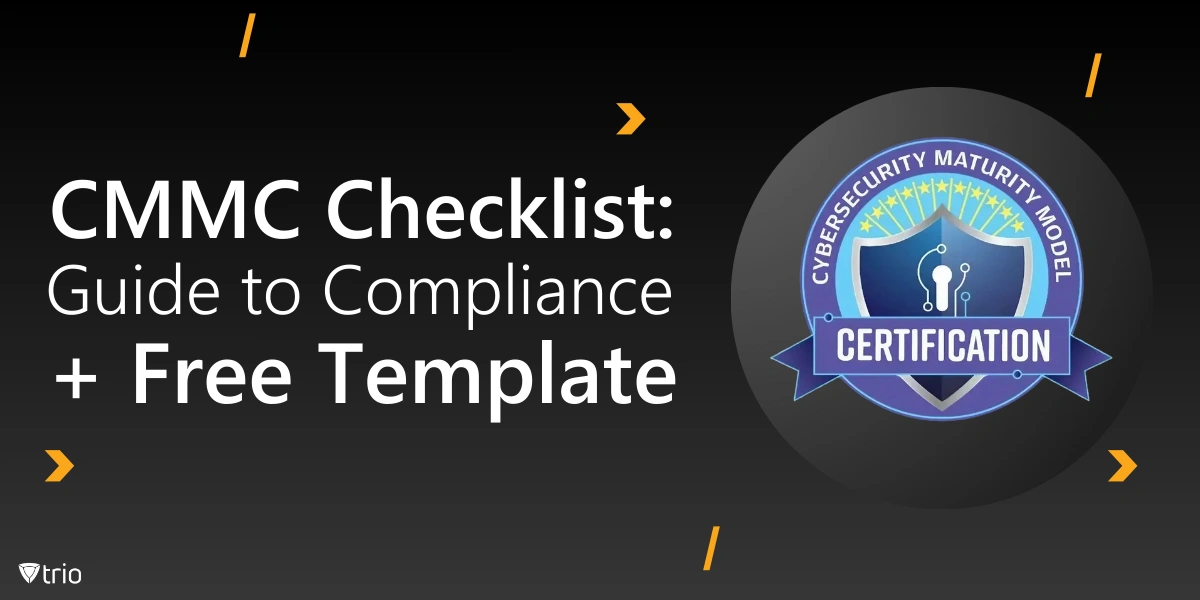Cybersecurity is critically important for organizations working with sensitive government information. The Cybersecurity Maturity Model Certification (CMMC) framework has emerged as a crucial standard for ensuring the protection of Controlled Unclassified Information (CUI) within the Defense Industrial Base (DIB). This blog post will delve into the essentials of a CMMC checklist, exploring its standards, requirements, and guidelines for creation.
Understanding the CMMC Checklist
A CMMC checklist is a comprehensive tool designed to help organizations prepare for and maintain compliance with the CMMC framework. This checklist serves as a roadmap for implementing and assessing cybersecurity practices across various maturity levels.
CMMC Compliance Requirements
The CMMC model consists of five maturity levels, each building upon the previous one:
- Level 1: Basic Cyber Hygiene
- Level 2: Intermediate Cyber Hygiene
- Level 3: Good Cyber Hygiene
- Level 4: Proactive
- Level 5: Advanced/Progressive
Each level has its own set of practices and processes that organizations must implement to achieve certification. The CMMC compliance requirements vary depending on the level an organization needs to attain based on the sensitivity of the information they handle.
CMMC Guidelines
When creating a CMMC checklist, it’s essential to follow these guidelines:
- Identify your required CMMC level
- Review the CMMC standards relevant to your level
- Assess your current cybersecurity practices
- Identify gaps in your security posture
- Develop a plan to address those gaps
- Implement necessary controls and processes
- Conduct internal audits and assessments
- Prepare for the CMMC compliance audit
CMMC Checklist Template: Streamlining Your Compliance Journey
To streamline the process of creating a CMMC checklist, we have developed a comprehensive CMMC checklist template that you can download for free and customize to your organization’s specific needs. This template covers all five maturity levels and includes sections for each domain of the CMMC framework.
Download Our Free CMMC Checklist Template
Key Components of Our CMMC Checklist Template
- Access Control
- Asset Management
- Audit and Accountability
- Awareness and Training
- Configuration Management
- Identification and Authentication
- Incident Response
- Maintenance
- Media Protection
- Personnel Security
- Physical Protection
- Recovery
- Risk Management
- Security Assessment
- Situational Awareness
- System and Communications Protection
- System and Information Integrity
By using this template, organizations can ensure they’re addressing all necessary CMMC requirements and streamline their compliance efforts.
CMMC Compliance Audit: Preparing for Success
A crucial step in achieving CMMC certification is undergoing a CMMC audit. This process involves a thorough examination of an organization’s cybersecurity practices by a Certified Third-Party Assessment Organization (C3PAO).
To prepare for a CMMC compliance audit:
- Conduct a self-assessment using our CMMC checklist
- Address any identified gaps or weaknesses
- Gather and organize all necessary documentation
- Train your staff on CMMC requirements and best practices
- Perform internal audits to ensure readiness
- Engage with a C3PAO to schedule your official audit
Introducing Trio MDM: Enhancing Your CMMC Compliance
As organizations navigate the complex landscape of CMMC compliance, having the right tools and solutions can make a significant difference. Trio MDM can be extremely helpful in this matter.
Trio MDM is our comprehensive Mobile Device Management solution designed to help organizations meet and exceed CMMC requirements. By providing robust security features, centralized management, and detailed reporting capabilities, Trio MDM addresses several key areas of the CMMC framework:
Access Control: Trio MDM enables granular control over device access, ensuring that only authorized personnel can access sensitive information.
Asset Management: Our solution provides real-time visibility into all mobile devices, helping organizations maintain an accurate inventory of their digital assets.
Configuration Management: With Trio MDM, you can easily enforce and manage security configurations across all devices, ensuring compliance with CMMC standards.
Incident Response: Trio MDM includes features for quick detection and response to security incidents, aligning with CMMC incident response requirements.
System and Information Integrity: Our solution helps maintain the integrity of your mobile ecosystem through regular updates, patch management, and malware protection.
By implementing Trio MDM, organizations can significantly enhance their cybersecurity posture and streamline their journey towards CMMC compliance. Whether you’re aiming for Level 1 or Level 5 certification, Trio MDM provides the tools and capabilities to meet and exceed CMMC requirements.
In conclusion, achieving and maintaining CMMC compliance is a complex but essential process for organizations working with sensitive government information. By utilizing a comprehensive CMMC checklist, following CMMC guidelines, and leveraging powerful solutions like Trio MDM, your organization can navigate the path to compliance with confidence and efficiency. We invite you to start your free demo to experience the full array of Trio’s mobile device management features.
Know about news
in your inbox
Our newsletter is the perfect way to stay informed about the latest updates,
features, and news related to our mobile device management software.
Subscribe today to stay in the know and get the most out of your mobile
devices with our MDM solution app.
Recent Posts

Erase the Risk: Protect with Zero Standing Privileges
Learn how zero standing privileges eliminate persistent access rights, enhance data security and reduce the risk of unauthorized access.

Understanding Access Control Types in Cybersecurity w/ Examples
Thorough understanding of access control types & the knowledge to make informed decisions about implementing security measures in your organization.

Cloud Data Protection: Safeguarding Information in the Cloud
Learn essential strategies for robust cloud data protection, exploring tools, best practices, and policies that safeguard sensitive information.





